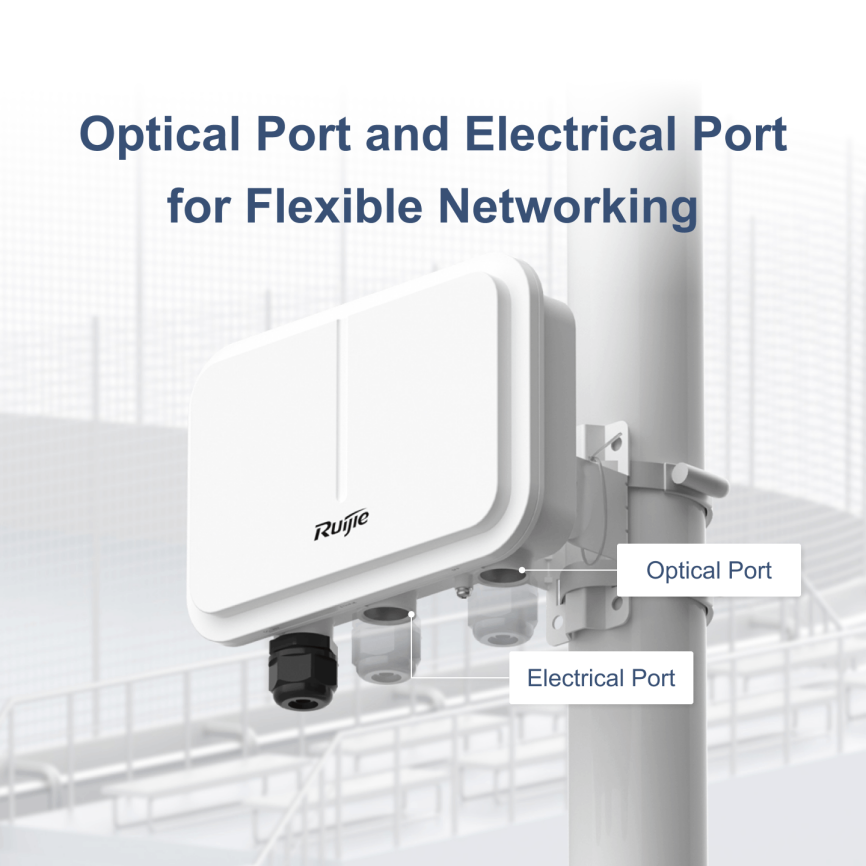Wireless Bridge products are primarily used to connect two or more networks, and are widely applied in situations where wired connections are inconvenient or construction costs are high. Primarily used in scenarios such as corporate campuses, inter-city networks, remote area networks, and industrial automation networks, wireless bridge products can effectively address the needs for long-distance, high-efficiency, and low-cost network connectivity.
Definition and Functionality of Wireless Bridge
Wireless Bridge, also known as wireless network bridge, is a broad concept referring to devices that connect two or more network segments within a wireless network, allowing data to be transmitted between different networks. It is designed for point-to-point inter-network connectivity using wireless technology for long-distance data transmission. In everyday life, we are more familiar with WiFi Bridges, which are suited for smaller-scale environments. These bridges utilize WiFi technology to wirelessly connect two or more network devices.
In contrast to WiFi Bridges, Wireless Bridges are not limited to WiFi technology but can also employ other wireless communication technologies such as microwave or infrared to achieve their purpose. Additionally, Wireless Bridges are typically used for long-distance wireless transmission, replacing wired connections between networks located in different geographical locations. This is especially useful in environments where cabling is inconvenient, trenching is impractical, or in pre-established settings where further disruption is undesirable.

Working Principles of Wireless Bridge
The principle behind how a Wireless Bridge works primarily relies on wireless communication and data forwarding technology, which can be divided into four main steps: wireless signal reception, data decapsulation, data forwarding, and wireless signal transmission.
Wireless Signal Reception
The wireless signal receiver at the receiving end is responsible for receiving wireless signals. It uses an antenna to collect wireless signals and converts them into digital signals. This step mainly relies on the radio frequency circuits and demodulation technology at the receiving end.
Data Decapsulation
The received digital signals are converted into Ethernet data through a decapsulation process. During this process, the signal processing unit of the wireless bridge dissects the wireless signal into packets and extracts key information such as MAC (Media Access Control) addresses and IP (Internet Protocol) addresses. This information will assist the bridge in subsequent data forwarding and routing selection.
Data Forwarding
Data forwarding is one of the core functions of a wireless bridge. The bridge uses the received MAC address information to find the optimal path between the two Ethernet networks it connects and forwards the data packets to the local area network where the target MAC address is located. This process involves the bridge's routing selection mechanism and data packet forwarding algorithms. Common data forwarding algorithms include unconditional forwarding, transparent bridging, and learning bridging.
Wireless Signal Transmission
After data forwarding, the bridge re-encapsulates the Ethernet data into wireless signals and transmits them through the wireless signal transmitter. The wireless signal transmitter uses radio frequency circuits and modulation technology to convert digital signals into wireless signals and transmits these signals through antennas to target networks within the specified range. This process relies on technologies such as RF circuits and modems at the transmitting end.
Main Application Scenarios of Wireless Bridge
Based on the technical characteristics of Wireless Bridge, its current main applications broadly cover the following scenarios:
Corporate Campus Network Connectivity:
Within large corporate campuses, connecting networks between different buildings may face challenges due to difficult or overly expensive cabling. In such cases, a Wireless Bridge can serve as an effective alternative solution to establish network connectivity and data transmission between buildings.
Inter-City Network Connectivity:
For network connections between cities, the geographical distance often makes wired connections impractical. Wireless Bridge can provide a long-distance wireless transmission solution, enabling inter-city network interconnection and data sharing.
Remote Area Network Access:
In remote areas or regions without wired network infrastructure, Wireless Bridge can serve as an economical and efficient solution to provide faster internet access services to these areas.
Remote Transmission for Video Surveillance Systems:
Video surveillance systems often need to cover large geographical areas and require real-time transmission of large amounts of video data. Wireless Bridge can serve as a reliable transmission method to transmit camera data quickly, efficiently, and securely to monitoring centers, helping to achieve remote monitoring and management.
Industrial Automation and IoT Applications:
In industrial automation and IoT applications, data transmission between sensors and controllers is crucial. Wireless Bridge can help connect these devices, enabling wireless data transmission and real-time monitoring, improving production efficiency and data transmission reliability.
Temporary Network Setup:
In scenarios requiring temporary network setups, such as exhibitions, conferences, and events with specific durations, wired networks may not be deployable in time. In such cases, Wireless Bridge can serve as a quick and flexible solution, providing stable network connectivity services for these events.
Network Connectivity in Special Environments:
In special environments where physical obstacles (such as rivers or mountains) make wired networks difficult to implement, or in scenarios where existing building structures need to be preserved, Wireless Bridge can serve as an effective network connection solution.
Growing demands for increased data transmission volumes and improved precision require manufacturers to continuously iterate on existing technologies. Taking the industry-leading brand Ruijie Reyee as an example, their range of Wireless Bridge products is diverse and comprehensive, all featuring high-reliability designs capable of stable high-speed operation in various harsh outdoor conditions such as severe cold, heat, sandstorms, and thunderstorms. Moreover, Reyee's Wireless Bridge products support customized configuration solutions based on different user needs, more precisely meeting business requirements such as surveillance video backhaul or wireless data transmission in various scenarios including elevators, tower cranes, factories, campuses, and construction sites.

Looking ahead, as technology continues to evolve, communication speeds and bandwidth will further increase. Future Wireless Bridge products, building on current models, will feature stronger anti-interference capabilities, enhanced stability, and more intelligent and automated functions. They will also integrate with 5G and other future communication technologies, expanding their applications in fields such as industrial automation and smart manufacturing. Additionally, they will broaden coverage in remote areas and special environments, providing more economical, stable, efficient, and sustainable network connectivity solutions.
Featured Articles
- Networking Tools for Retail Stores: The Core Value of Cloud-Managed APs












